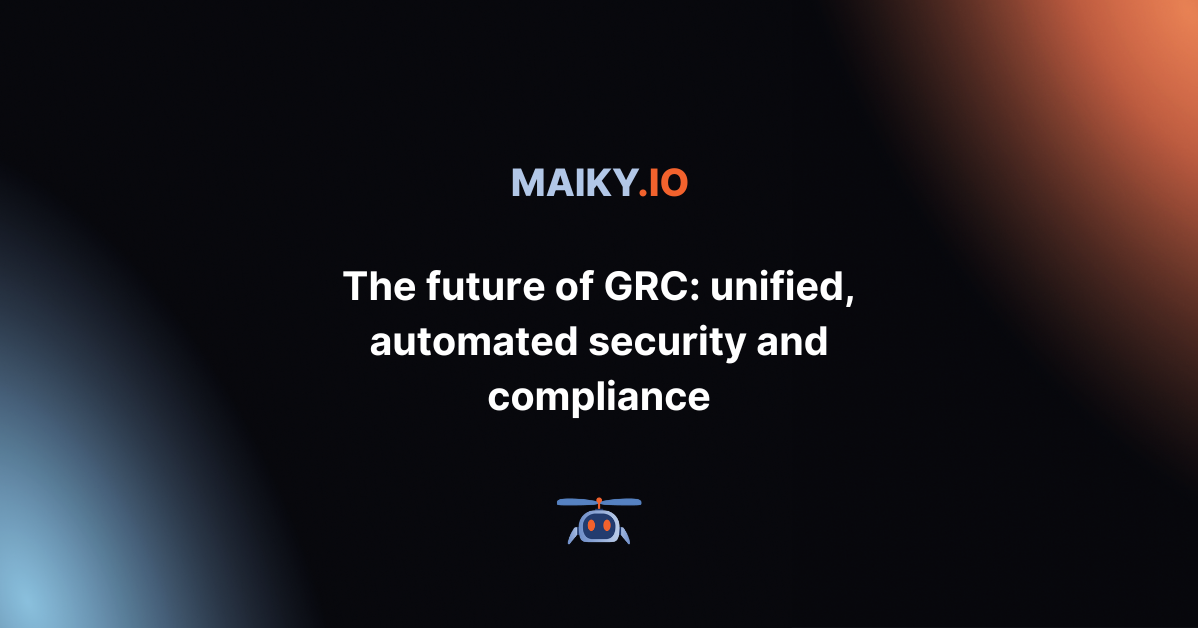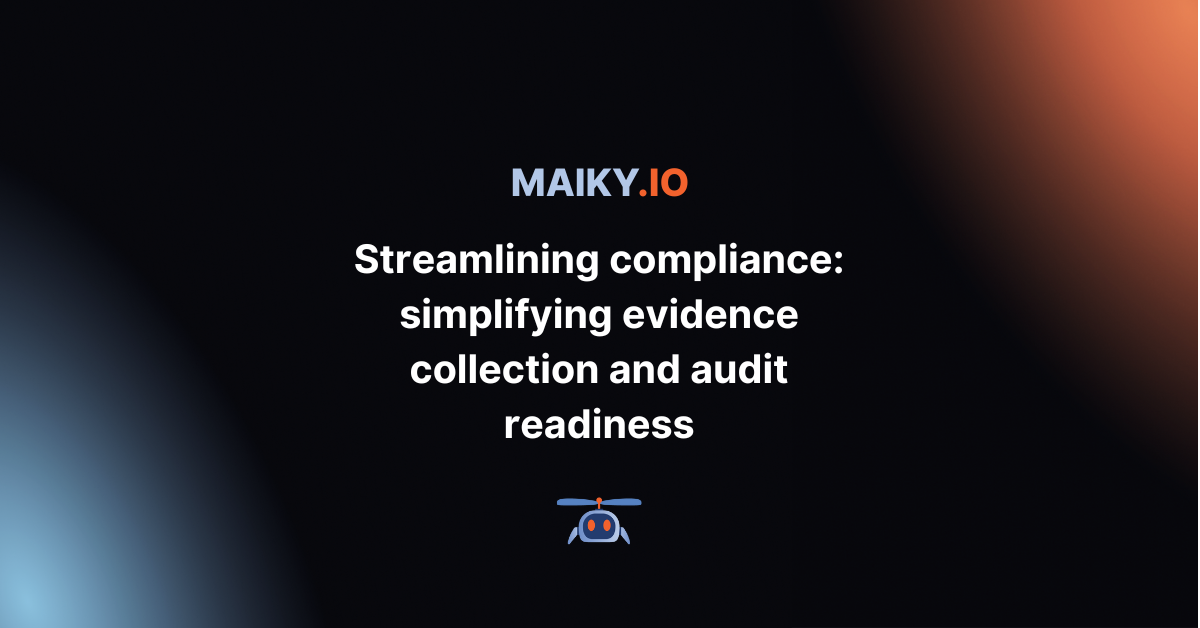Adapting GRC to your organisation’s unique context
Governance, Risk, and Compliance (GRC) management is no longer a “one-size-fits-all” function. Every organisation faces unique risks, operates under different regulatory pressures, and sits at varying levels of maturity when it comes to information security. For many, adopting rigid frameworks or generic tools often leads to frustration, inefficiency, and wasted resources.
That is where customisable GRC workflows come in. By tailoring processes to fit your organisation’s size, industry, and maturity, you can build a compliance program that is both effective and sustainable. Instead of forcing your business into a predefined mould, flexible GRC solutions adapt to your needs and scale as you grow.
Why flexibility matters in GRC
Traditional GRC implementations often focus on aligning with external frameworks (ISO 27001, NIS2, SOC 2, HIPAA, etc.). While this alignment is critical, the challenge arises when these frameworks are applied uniformly across organisations that operate very differently.A startup in fintech with 20 employees has very different requirements compared to a healthcare provider with thousands of staff across multiple regions. Yet too often, both are expected to follow the same rigid processes.
Without flexibility, GRC can become:
- Overwhelming for small teams → too many controls, overly complex documentation, and insufficient resources to comply meaningfully.
- Restrictive for enterprises → difficult to adapt global standards to local realities.
- Inefficient overall → processes are duplicated, gaps appear, and compliance becomes a burden instead of an enabler.
The solution is empowering teams with customisable, scalable, and adaptive workflows that fit their precise context, reducing friction and enhancing compliance effectiveness.
Customisable workflows in practice
What does flexibility in GRC actually look like? Let us break down how organisations at different stages can benefit:1. Early-stage organisations
For startups or small businesses just starting their compliance journey, they need simplicity and focus:
-
Start with core controls mapped to your most relevant framework (e.g., ISO 27001 basics or NIS2 essentials).
-
Automate evidence collection from key systems to reduce manual workload.
-
Avoid “compliance theatre” by concentrating on high-impact controls relevant at this stage.
-
Use pre-built templates with room to customise and evolve.
2. Growing organisations
As the business expands, compliance requirements multiply. This is where scalable workflows are critical:
-
Implement industry-specific customisation (finance, healthcare, SaaS), prioritising sector risks.
-
Use workflow branching so different departments can follow tailored processes while feeding into a single compliance dashboard.
-
Apply role-based access for visibility and accountability without overburdening users.
- Integrate with business tools to automate workflows and evidence gathering.
3. Mature enterprises
Larger organisations often juggle multiple frameworks and regions simultaneously:
-
Run parallel workflows for different standards while avoiding duplication.
-
Adapt global policies to local execution (for example, adjusting data-handling workflows in line with EU vs. US requirements).
-
Integrate compliance workflows with existing governance and operational tools.
-
Ensure audit-readiness with detailed, automated reporting and evidence trails.
Streamlining Compliance:
Simplifying Evidence Collection And Audit Readiness
Local vs cloud execution
Flexibility also extends to where workflows run. Some organisations need workflows executed locally due to data sovereignty or regulatory concerns, while others prefer cloud execution for speed and scalability.With a flexible GRC platform, you can:
-
Execute workflows locally for sensitive environments where data cannot leave your infrastructure.
-
Run workflows in the cloud for faster rollout and easier integration across distributed teams.
-
Mix both approaches depending on the business unit or geography.
This hybrid capability ensures compliance adapts to your needs, not the other way around.
Quick onboarding: reducing barriers and adoption
One of the main barriers to GRC adoption is the perception that it is slow, complex, and disruptive. Lengthy onboarding processes discourage teams and delay compliance progress.Flexible workflows solve this by:
-
Offering pre-built templates aligned to common frameworks.
-
Allowing drag-and-drop customisation without technical expertise.
-
Ensuring teams can start small and expand gradually.
-
Early automation wins in policy reviews, vendor onboarding, and risk assessments generate quick ROI, boosting adoption.
This approach means organisations see value quickly while building towards long-term compliance maturity.
Maiky in Action: workflow customisation at scale
At Maiky, we have designed our platform around the principle that no two organisations are alike.With Maiky, you can:
-
Customise workflows to match your size, industry, and risk profile.
-
Choose between local or cloud execution depending on regulatory needs.
-
Scale workflows as you grow, from startup to enterprise, without starting over.
-
Onboard quickly with intuitive, pre-built templates that you can adapt as needed.
By giving teams the tools to shape GRC processes around their reality, Maiky removes the friction that makes compliance feel like a burden. The result is efficient, adaptive, and business-aligned governance.
The future of GRC: adaptive by design
As threats evolve and regulations tighten, GRC platforms will need to be as adaptive as the organisations they support. The future will belong to solutions that:-
Provide modular workflows that evolve with maturity.
-
Offer hybrid execution options (cloud and local).
-
Enable industry-specific tailoring without reinventing the wheel.
-
Support continuous improvement, not just checkbox compliance.
The organisations that succeed will be those that see compliance not as a rigid framework, but as fluid and adaptive, powered by intelligent platforms.
The Future Of GRC:
Unified, Automated Security And Compliance
Key Takeaways
-
GRC is not one-size-fits-all; different industries and maturity levels need different workflows.
-
Flexible workflows reduce inefficiency, improve adoption, and make compliance scalable and achievable.
-
Choosing between local, cloud, and hybrid deployment unlocks maximum operational freedom.
-
Quick onboarding accelerates compliance progress and shows immediate business value.
-
With Maiky, organisations gain workflow customisation, hybrid execution, and fast onboarding, making compliance both adaptive and practical.



